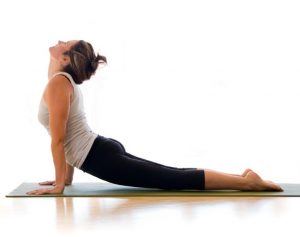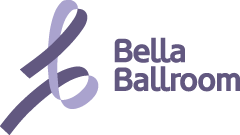Stretching for Dancers
While some consider ballroom dancing to be a sport (Dancesport) and others consider dancing a performing art, the athleticism of an active dancer is undeniable, especially of those who are competitive. As athletes, dancers need to take care of their bodies in order to prosper in their dancing and expand their dance ability. Stretching and flexibility are two elements essential to the routine of any good and healthy dancer. Proper stretching is also needed for injury prevention, preventing muscle crams, and alleviating stiff joints and muscle tightness.
Dancers rely on a wide range of motion to execute their dance moves to the fullest. For dancers looking to further their flexibility, there are a variety different factors that come into play. While dancers who are starting a new stretch regime may hope to be able to do the splits for their ballroom routines immediately, a gain in flexibility can take some time. A person’s given joint anatomy, physiology, and elasticity of ligaments and tendons will affect their range of motion. Gender can also affect flexibility. Men can achieve the same flexibility women, yet differences in bone structure, chemical make-up, and muscle mass can create obstacles them. A dancer’s age can also affect their potential to gain flexibility. Since flexibility declines in adulthood, maintaining or increasing range of motion of joints takes more effort for adults than for children. That being said, the potential to gain flexibility is always there, it just becomes more challenging with age.
If you’re a dancer working towards greater flexibility, there are a few precautions to keep in mind. Often times dancers who are eager to have a more pliable body push themselves too hard and tear muscle fibers in the process. The protective response known as the “stretch reflex” makes the muscle contract and can cause injury. Easing into a stretch after being properly warmed up is a safer approach. It’s also important to avoid tensing up the rest of the body while focusing on stretching specific muscles. For example, dancers trying to achieve the splits should work all the muscles involved in the splits individually first before simply jumping into the splits. There are several muscles in the legs and around the hips that need to be worked carefully with distinctive attention as well as a cohesive unit. Dancers should bring their awareness of good posture into their stretch routine. Breathing will aid dancers and as a general rule, stretchers should inhale to prepare and exhale to go deeper into the extension of the muscle. Also, just as a ballroom dancer is consistent in practicing their dance patterns and dance moves, a dancer has to be consistent with their stretching routine if they want to make progress and avoid injury.
Since ballroom dancing involves all of the major muscle groups, a good stretch routine will include exercises that work all of the major muscles. The major muscle groups that will get a workout with ballroom dancing include the upper back muscles, especially around the shoulders and upper arms as ballroom dancers work towards holding a good frame. The abdominal muscles and oblique’s are used to support a dancer’s posture and should also be strengthened and stretched. The hip abductors, hip adductors, quadriceps, calves, hamstrings, and gluteals play an important and essential part in executing dance patterns and dance all together. These body parts also require special attention. Classic yoga moves such as the downward dog, the extended triangle pose, the high lunge pose, and tree pose are good for all over body stretching and also challenge a dancer’s balance. There are also a myriad of other stretching for dancers that can be discovered from doing some research, asking a personal trainer, or asking your Bella Ballroom dance instructor.
Article by Ziva.


